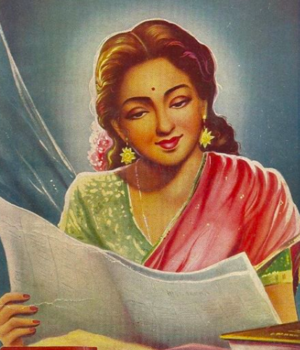
Ranger Ranger is a multimedia research project that explores the narratives of the wild. It delves into the lives of people working in and around the forests of India – be it rangers, tribals, or even volunteers from the village. The long-term journalism project is in collaboration with the creative platform Mukha and the brainchild of Sonali Prasad, a Delhi based journalist. Through their stories, Ranger Ranger is changing the way in which wildlife in India is looked at.
The project was born from statistics – specifically one from the International Rangers Association stating that in 2014, the highest mortality rate on rangers in India. Sonali Prasad was stunned by this, but she also explains that while forest rangers in countries such as the United States are celebrated, in India the occupation itself is a lesser known one. Her desire to study the lives of rangers, and livelihoods related to wildlife, kick-started the project. She received a grant from the Pulitzer Travelling Fellowship that allowed Ranger Ranger to take flight, in collaboration with the creative platform Mukha.

The series moves away from the numbers and works towards creating a holistic and multi-media understanding of the living and caring for the wild. The stories that are recorded delve into the lives of the animals in the wild, as well as how the area changes with development and encroachment. The project documents the truth, and so it records “the flaws as much as the valor, the corruption as much as the accomplishments.”
In Assam’s Kaziranga National Park, Ranger Ranger introduces us to veterinarian Panjit Basumatary and the constipated orphaned rhinos. Basumatary takes care of the animals, paying close attention to the routine bowel movements, and stepping in when necessary.
Another story documents the resurrection of the tigers at Sariska. By 2005 the National Tiger Conservation Authority called for an emergency tiger census in Sariska after a startling lack of tigers was observed. A two month investigation revealed that there were no longer any tigers in Sariska. As poaching cases were filed and hunters arrested, the root of the problem was still under study. The locals felt that the problem arose from corrupt administration, whereas the forest officials believed it to be a result of inadequate staff and training. Between 2008 and 2012 eight tigers were brought in from Ranthambore, and by 2017 Sariska houses 14 of them. The animals are monitored and cared for by the forest department, making the park once more famous for its tigers. The story explores Janeshwar Singh’s fight against poachers, and for the wildlife.

Prasad’s own favourite story from the project is from her first dispatch, the Desert National Park (DNP). Along with the photographer, she stayed out in the open as the guards do in summer. While the view of the desert in the night was spectacular, she said she wasn’t too thrilled by “a desert fox deciding to stop by my mattress in the middle of the night and howling in my ear as I crept in deeper into my covers”. It was during this trip when she met the first female guard hired by the DNP, Sukhpali. Staying with her allowed Prasad to document her daily routine – shuffling between caring for her daughter, to maintaining good relations with the locals, to fighting fires, and even works for the preservation of the Great Indian Bustard.
“Change is always gradual” Prasad explains. By exploring the flaws in the system, and fact-checking all the data, Ranger Ranger pushes to improve wildlife and its conservation one step at a time. Once written, the articles are sent to the head of the forest, pointing out any inadequacies, thereby pushing them to enforce corrective policies. For instance, once the story for Sariska came out, it recorded the lack of sweaters for the guards and how it impacted their lives. A few months later, Prasad received a picture of the guards wearing new sweaters.
Our stories have driven fruitful conversations amongst forest officers, biologists and policymakers on contentious topics such as human-animal conflict, rehabilitation of villages within parks and innovative solutions that engage community in conservation.
But above all else, she feels that reaching out to schoolchildren and educating them through the project might have been the most vital impact it had.

When looking to the future, she hopes to continue with the project in more southern and central regions of India, as well as engage with students at a larger level. In terms of documentation and presentation, Prasad is open to the idea of dabbling with a variety of mediums such as videos and virtual reality, to add depth to the project.
Prasad regards the future with optimism. “I hope that we are able to move the needle a little bit somehow – be it by inspiring the next generation to visit national parks and spend time in the wild in order to know what they must protect, or perhaps by starting a more empathetic dialogue between policy makers and villagers who live suspended between the law of the land and the law of the jungle within or around the boundaries of protected areas.”

Sonali Prasad’s project gives insight to a lesser known part of India, and works towards changing our perceptions about wildlife.
“A successful conservation story must have the community playing a pivotal role, so it is important to not alienate them, but to work with them, and their needs and customs.”
You can read more about the project on their website.
Written by Raika Aban Sengupta
Featured image credits: Indrajeet Rajkhowa













